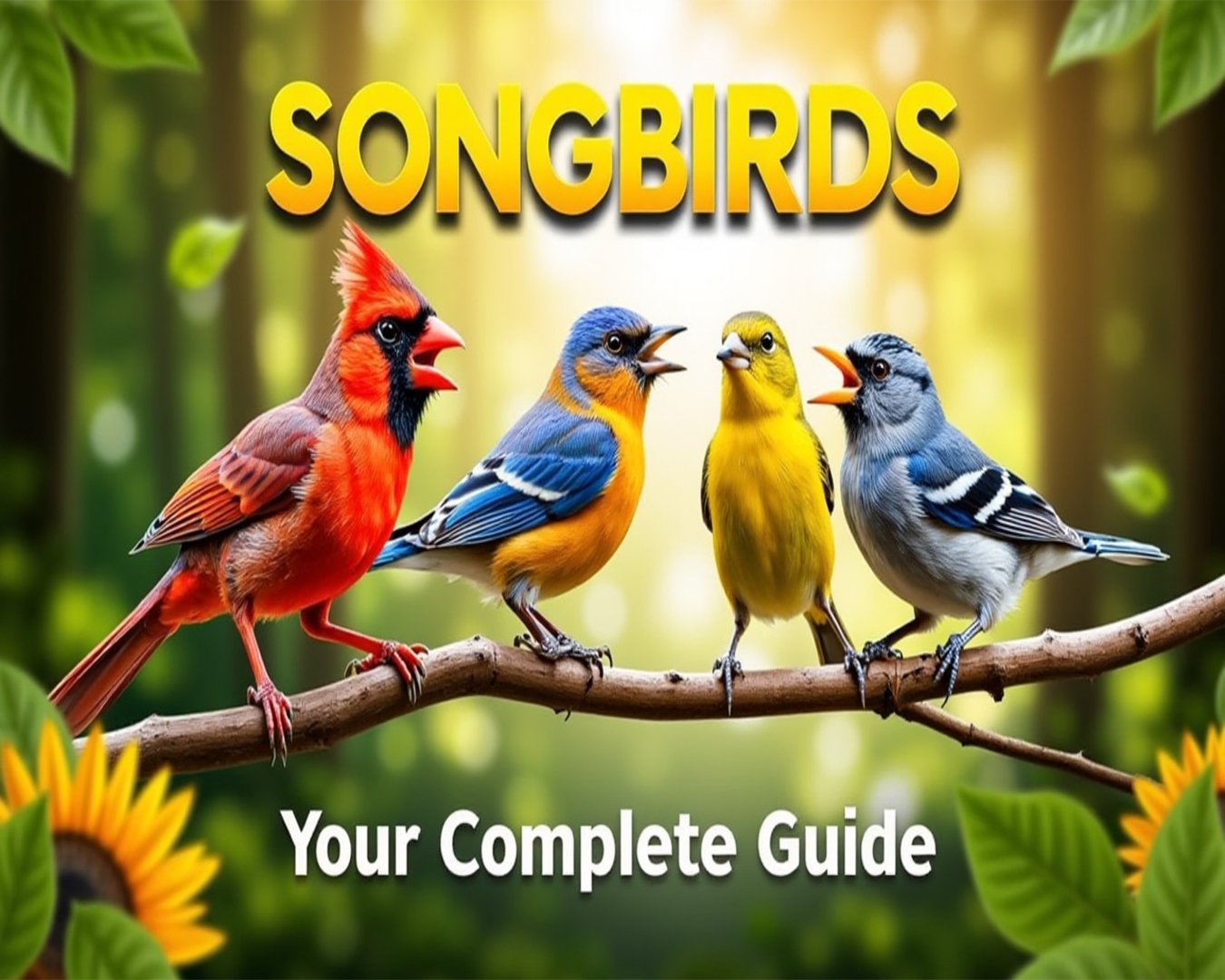Songbirds, also known as passerines, belong to the order Passeriformes. They are known for their vocal abilities, producing complex and melodious sounds that have captivated humans for centuries. Songbirds are incredibly diverse, with over 5,000 species spread across the globe. In this article, we’ll explore some of the most notable and beloved songbirds, their unique characteristics, and their habitats.
Common Songbirds
- American Robin (Turdus migratorius)
- Description: The American Robin is a familiar sight in North America, recognized by its bright red-orange breast, gray back, and black head.
- Song: Their song is a cheerful and repetitive series of whistles often described as “cheerily, cheer up, cheer up, cheerily, cheer up.”
- Habitat: They are commonly found in gardens, parks, and wooded areas.
- Northern Cardinal (Cardinalis cardinalis)
- Description: The male Northern Cardinal is vibrant red with a black mask around the face, while females are a muted tan with reddish tinges.
- Song: Their song is a series of clear whistles that often sounds like “cheer, cheer, cheer” or “birdie, birdie, birdie.”
- Habitat: They are prevalent in forests, gardens, and wetlands.
- European Blackbird (Turdus merula)
- Description: Males are all-black with a yellow beak and eye-ring, while females are brown with a slightly streaked breast.
- Song: Their song is a rich, varied series of fluty notes and phrases, often delivered from a high perch.
- Habitat: They are commonly found in woodlands, gardens, and urban areas throughout Europe.
- Song Thrush (Turdus philomelos)
- Description: The Song Thrush has brown upperparts and black-spotted underparts, with a distinctive repetitive song.
- Song: Their song is a series of musical phrases repeated several times, making them one of the most recognizable songbirds in Europe.
- Habitat: They inhabit forests, gardens, and parks.
- Eastern Bluebird (Sialia sialis)
- Description: Males are bright blue with a rusty red throat and chest, while females are more subdued in color with bluish wings and tail.
- Song: Their song is a soft, melodious warbling, often described as “cheer cheerful charmer.”
- Habitat: They are typically found in open woodlands, farmlands, and orchards.
Notable Songbirds
- Nightingale (Luscinia megarhynchos)
- Description: The Nightingale is a small, plain brown bird that is famous for its powerful and beautiful song.
- Song: Their song is a loud, intricate series of whistles, trills, and gurgles, often delivered at night.
- Habitat: They prefer dense shrubs and woodlands in Europe and Asia.
- Canary (Serinus canaria)
- Description: Canaries are small, yellow-green finches originally from the Canary Islands.
- Song: They are known for their pleasant and varied songs, making them popular as cage birds.
- Habitat: In the wild, they inhabit forests, grasslands, and shrublands.
- Common Nightingale (Luscinia luscinia)
- Description: Similar to the Nightingale, this bird has a more robust build and is slightly larger.
- Song: Their song is a complex and melodious combination of whistles, trills, and warbles.
- Habitat: They are found in woodlands and gardens across Europe and Asia.
- House Finch (Haemorhous mexicanus)
- Description: Males have bright red plumage on their heads and throats, while females are streaked brown and white.
- Song: Their song is a long, jumbled warbling composed of short notes and trills.
- Habitat: They thrive in urban and suburban areas, as well as open woodlands.
- Barn Swallow (Hirundo rustica)
- Description: Barn Swallows have sleek, blue-black upperparts and a rufous throat and forehead, with a deeply forked tail.
- Song: Their song is a series of cheerful, twittering notes.
- Habitat: They are commonly found in open fields, farmlands, and near water.
Conclusion
Songbirds are a vital part of our ecosystems, enchanting us with their musical abilities and adding beauty to our natural surroundings. From the cheerful American Robin to the melodious Nightingale, these birds continue to inspire and delight birdwatchers and nature enthusiasts around the world. By understanding and appreciating the diversity of songbirds, we can better protect and preserve their habitats for future generations to enjoy.




